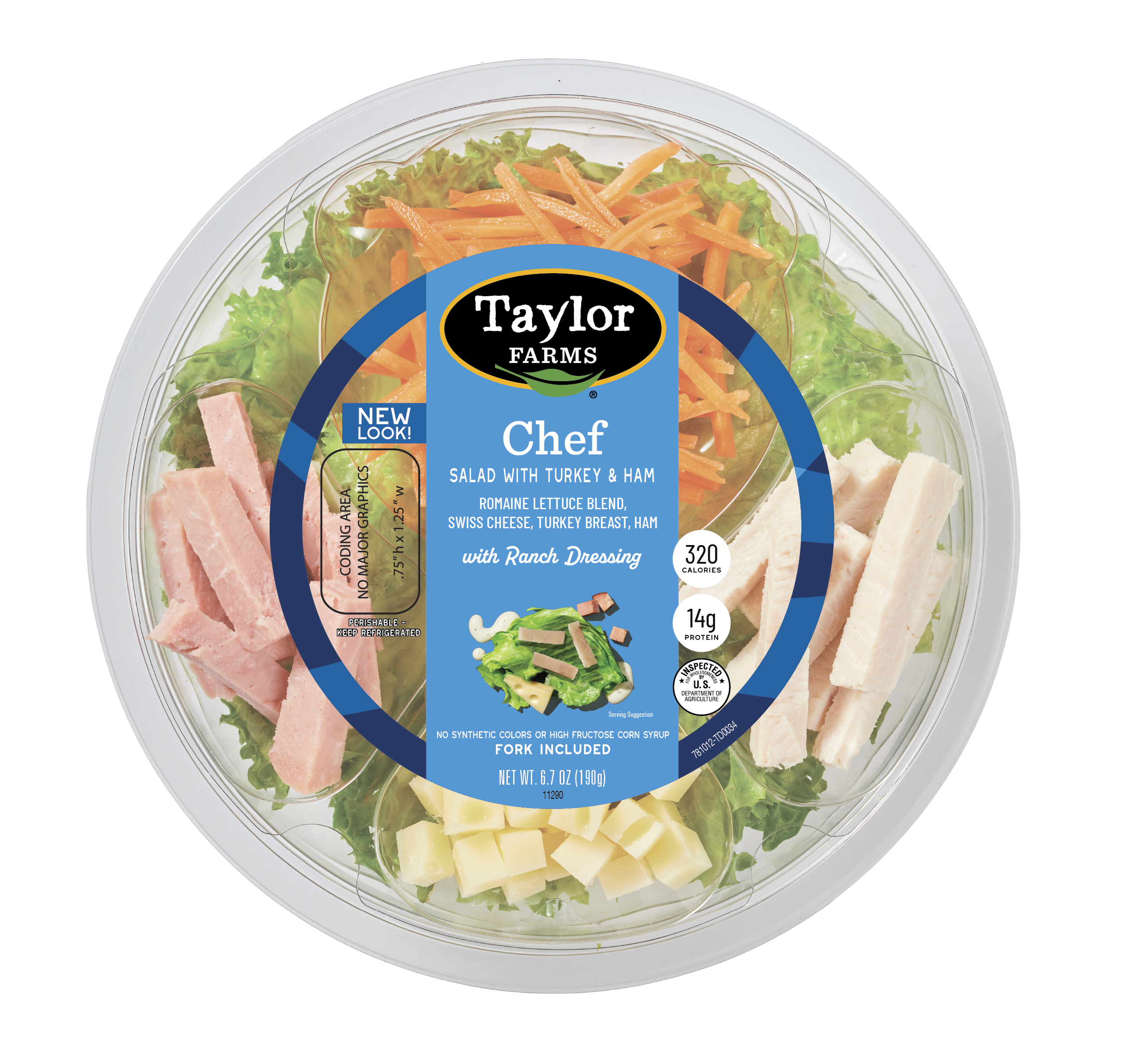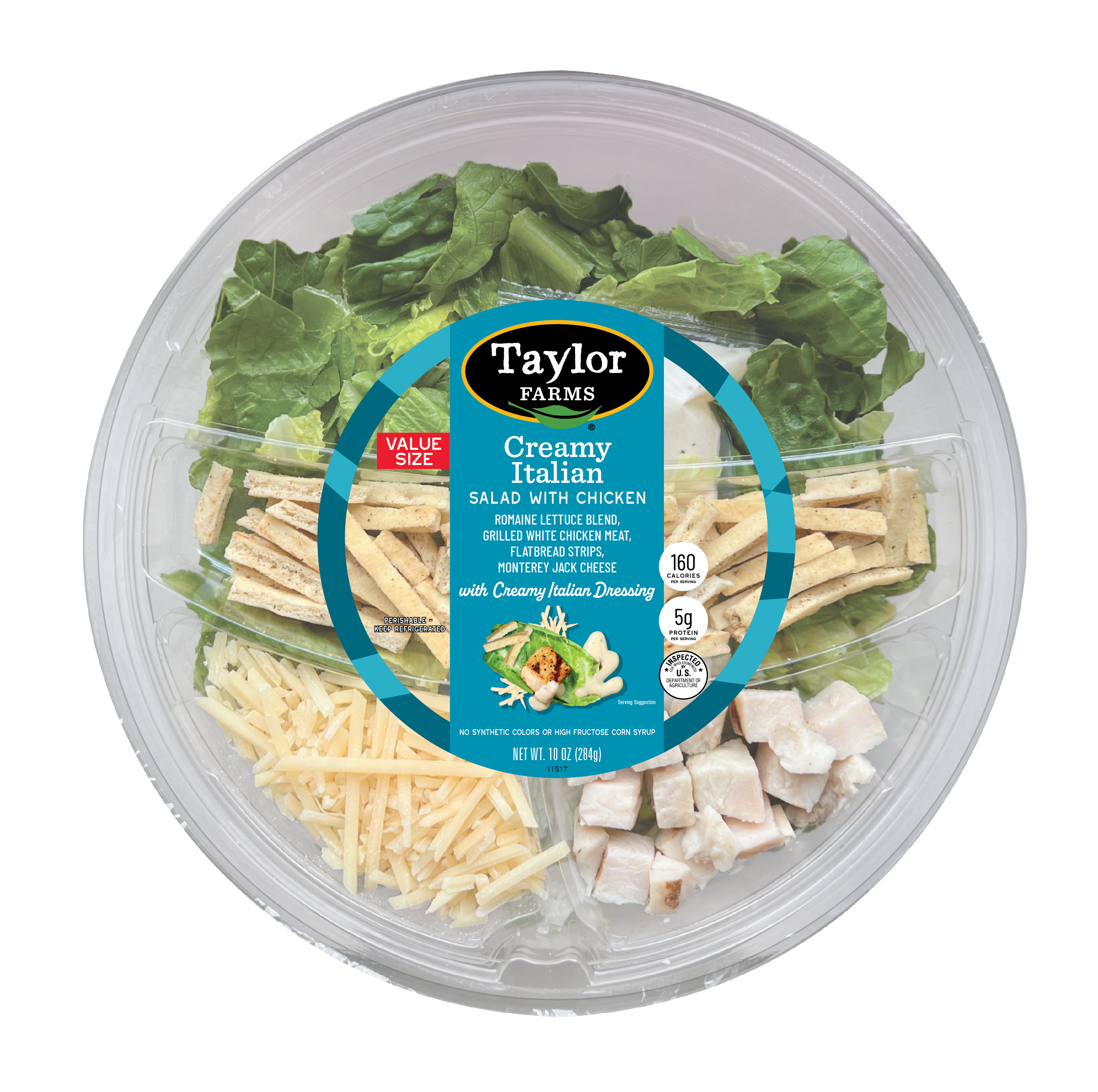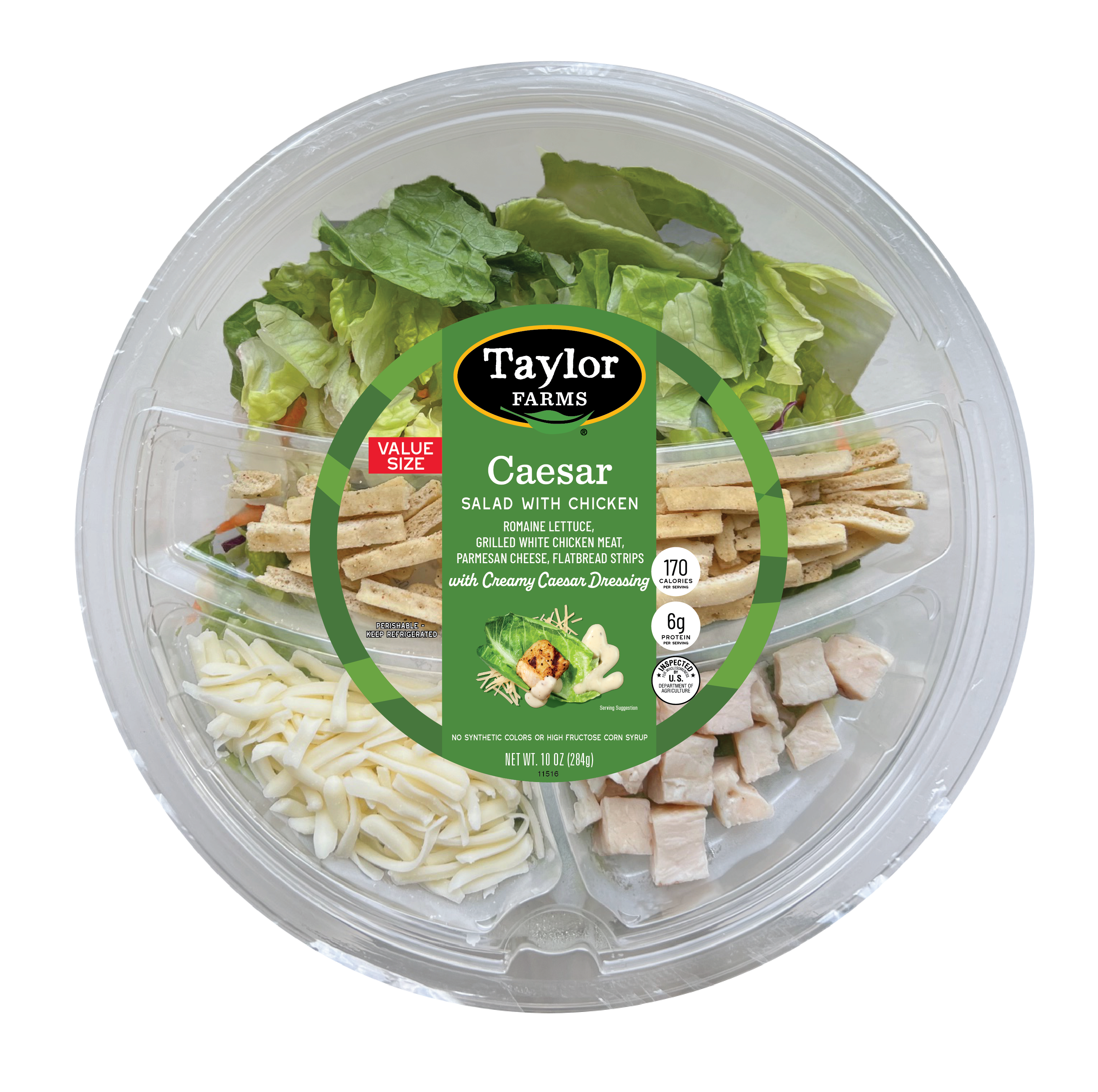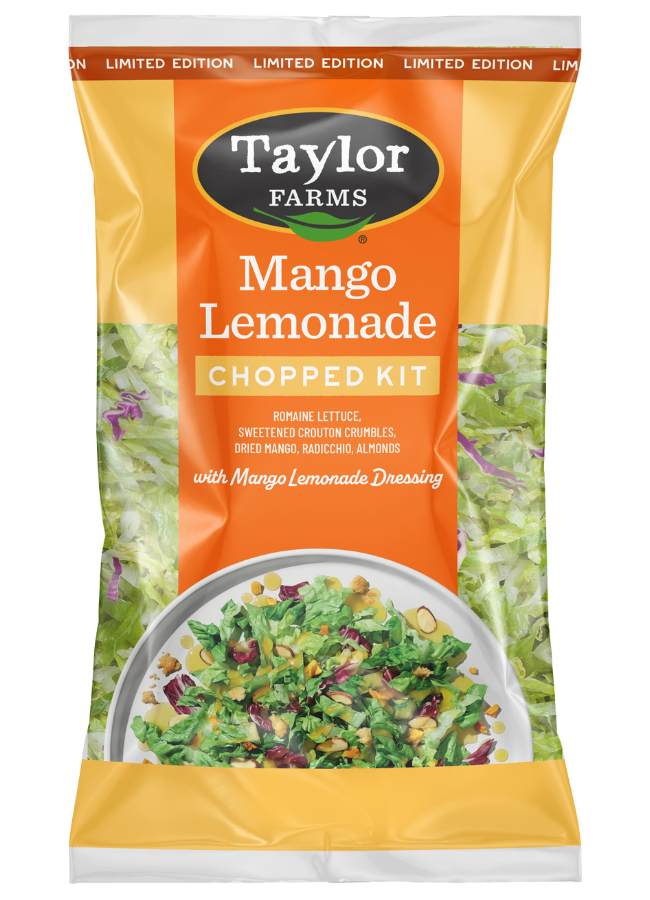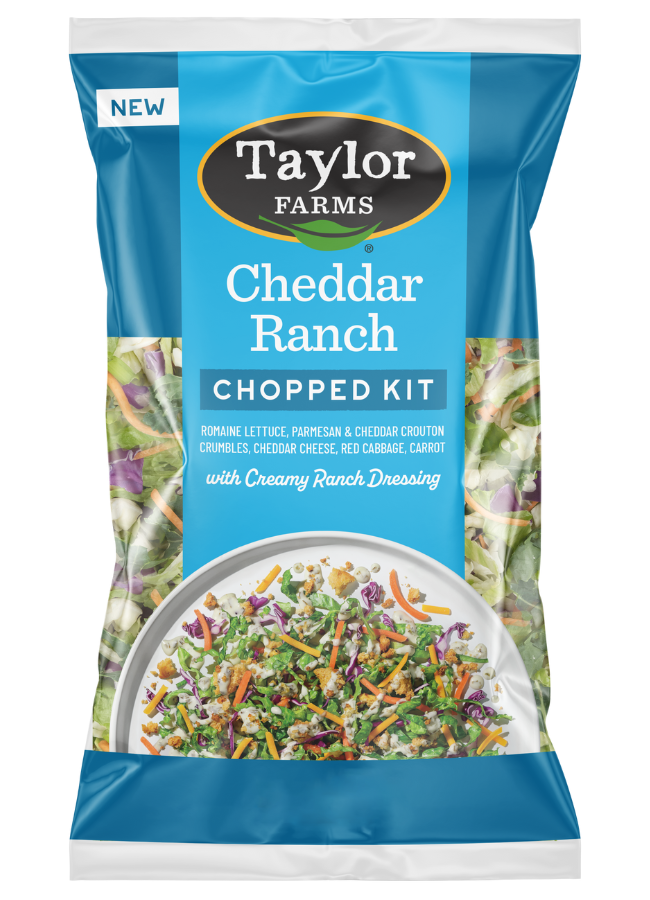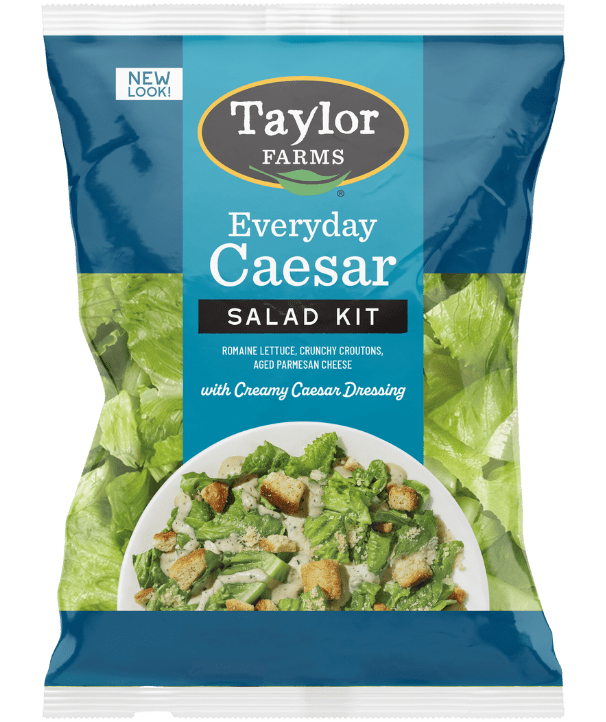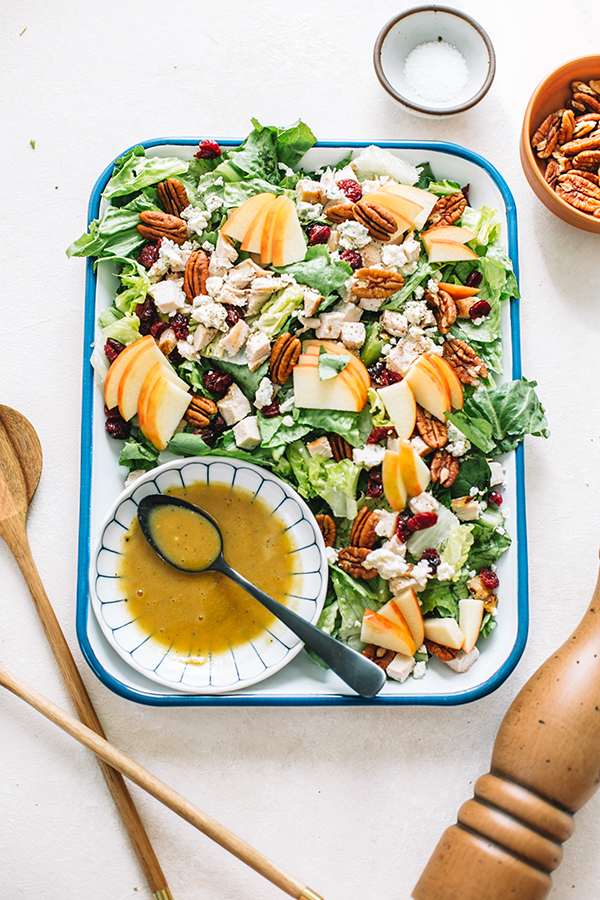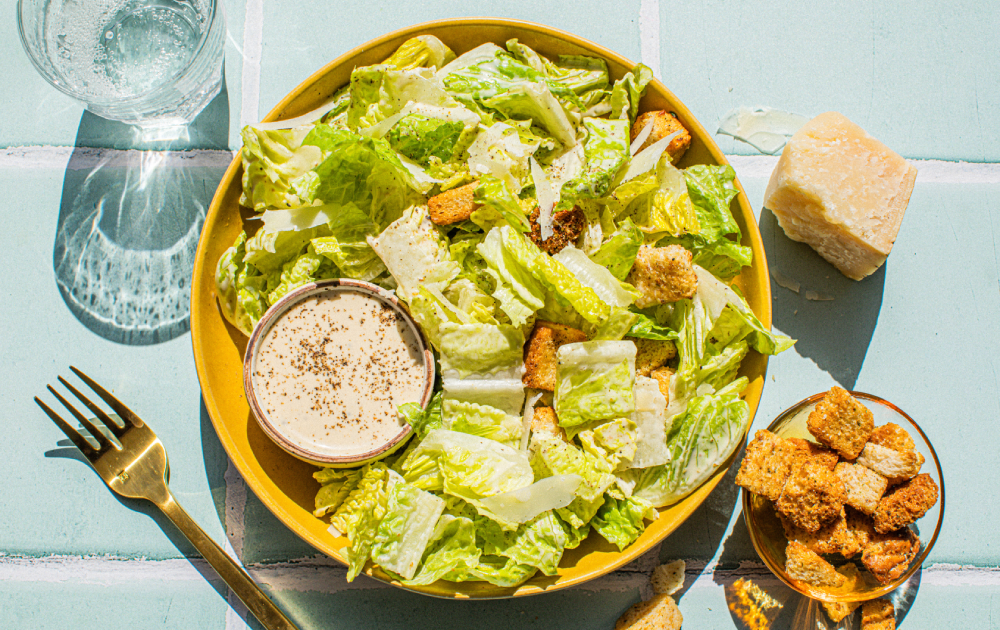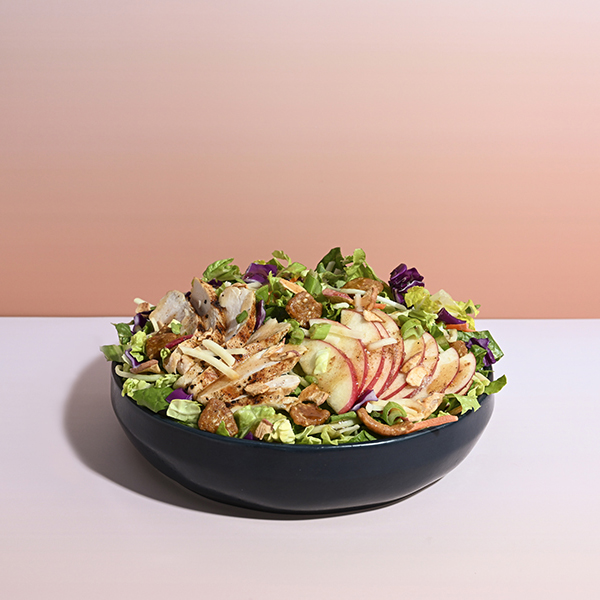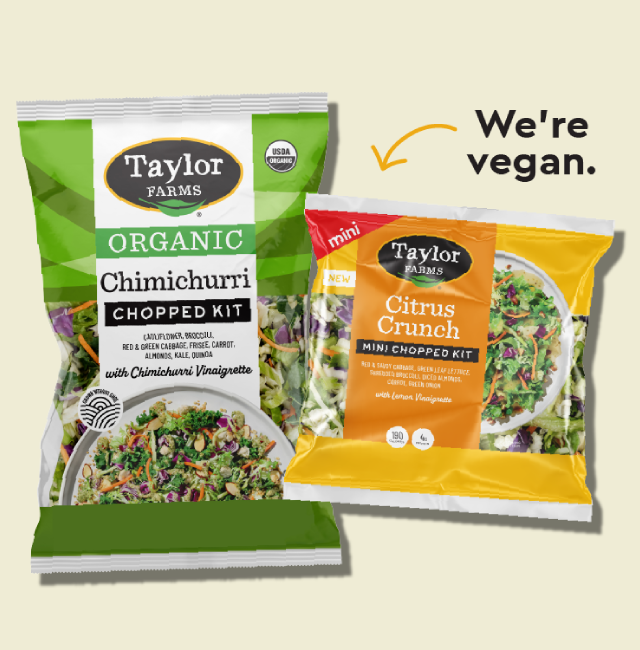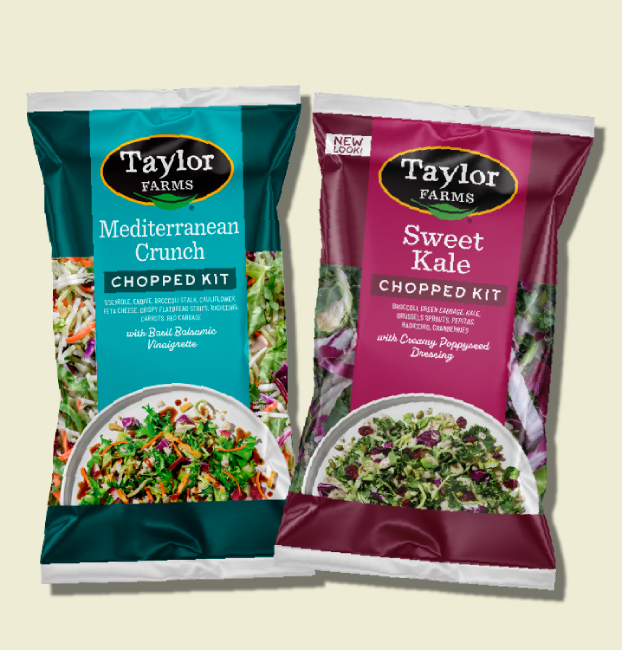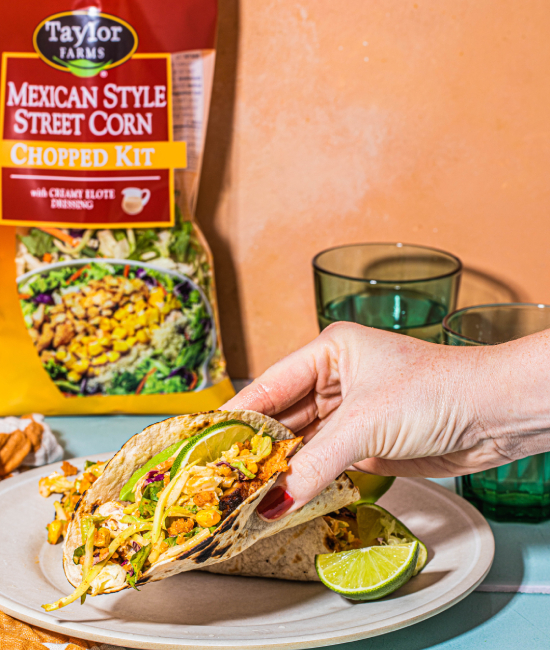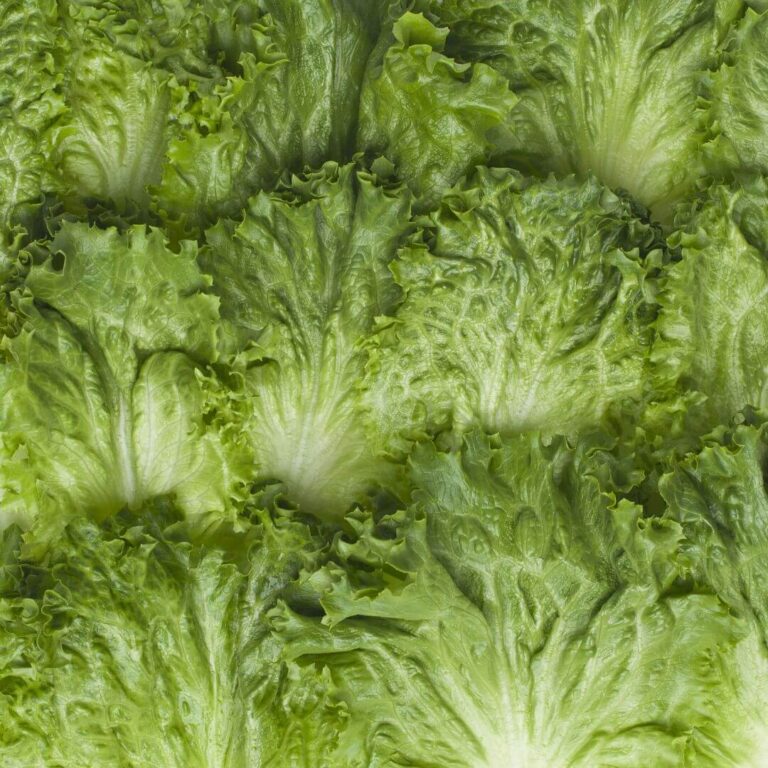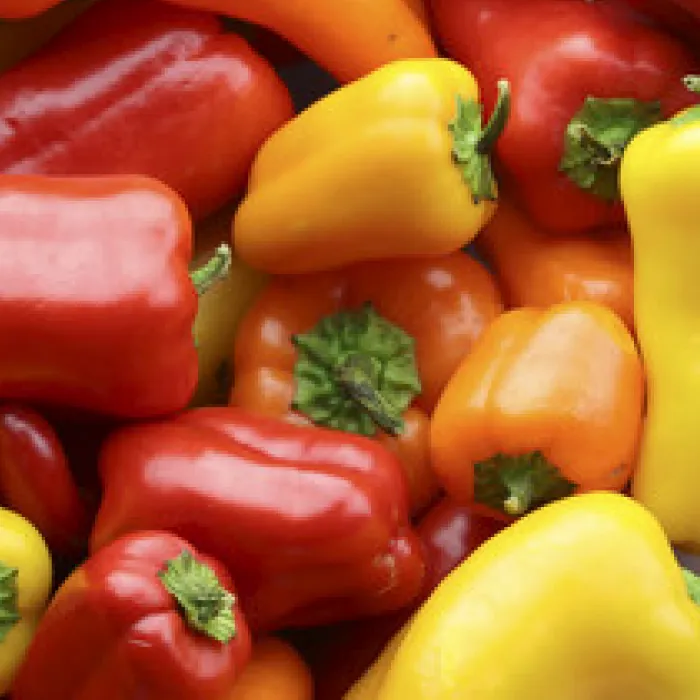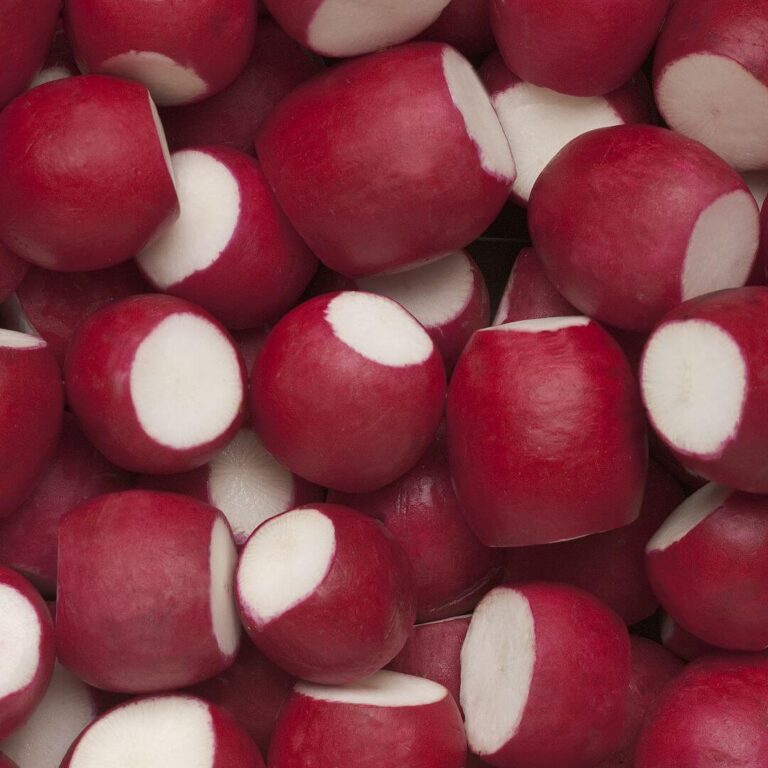Romaine Lettuce at a Glance
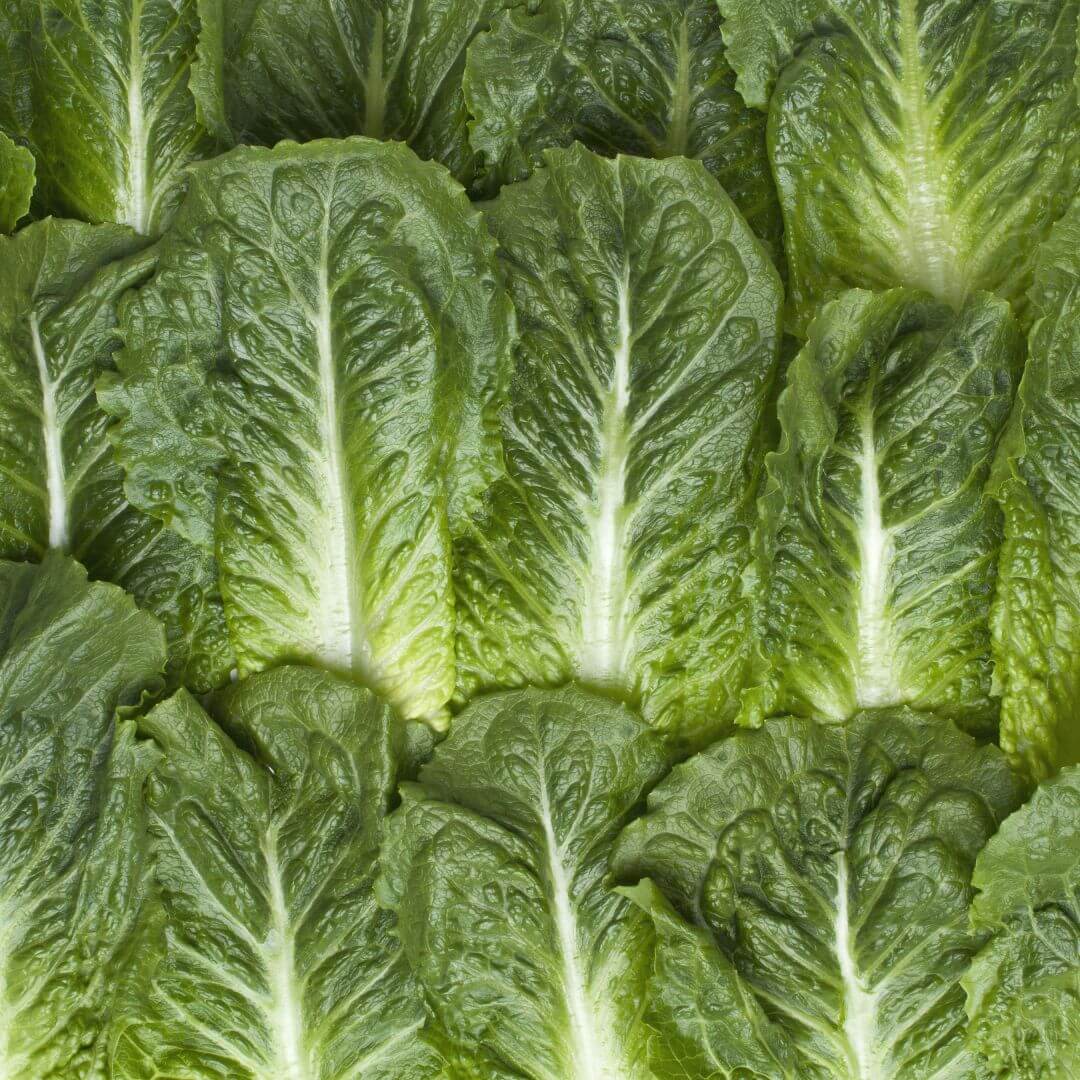
Scientific Name: Lactuca sativa var. longifolia
Family: Asteraceae
In Season: Spring and fall, available year-round due to modern farming practices.
Varieties: Classic green romaine with elongated leaves and red romaine, which has reddish-purple leaves. There are also several cultivars and hybrids that offer variations in taste, texture, and appearance.
Great for: Salads, sandwiches, wraps, and as a base for various dishes. It has a crisp texture and a mild, slightly sweet flavor that complements a wide range of ingredients, dressings, and sauces.
Romaine Lettuce Nutrition
Rich in Vitamins A, K, and C
Potassium & Manganese
Beta-carotene and Lutein
Common Questions about Romaine Lettuce
When enjoyed raw, romaine lettuce is rich in texture and flavor. Each crisp, juicy bite reveals a subtly sweet and earthy taste that’s even a bit refreshing, especially nearer to the heart of the leaf. There’s a slight hint of bitterness that balances the sweetness and adds depth to the flavor profile. The large, rigid leaves have a pleasant crunch that’s satisfying on its own but even better when added to salads or used as wraps.
While it’s less common to see romaine lettuce cooked, it takes on a whole new dimension of flavor and texture when exposed to heat. The leaves become tender, the sweetness is heightened, and there’s a distinct nutty undertone. Lightly grilling or sautéing romaine lettuce intensifies its flavor, while still maintaining some of its signature crunch. Cooked romaine makes a surprising and delicious addition to warm salads, soups, and stir-fries.
Growing romaine
Romaine lettuce is typically ready to be picked when the leaves have reached a desirable size and have a firm, crisp texture. The leaves should be a deep green color, indicating that they are healthy and mature. Avoid picking romaine lettuce with yellowing or wilting leaves.
Purchased romaine
When purchasing fresh, look for romaine lettuce heads or bunches with vibrant green leaves that are free from browning, discoloration, or signs of wilting. The outer leaves may have some natural variations in color, but they should still appear fresh and crisp. Fresh romaine lettuce should have a mild, pleasant aroma. If it smells off or has a strong, unpleasant odor, it is likely past its prime.
Due to the high moisture content, romaine lettuce is not made for freezing and thus not recommended.
Romaine lettuce is grown in many parts of the world, including North America, Europe, Asia, and other temperate regions. Major romaine-producing countries include the United States, Canada, Spain, Italy, France, and China. Thanks to modern farming practices, romaine can be grown practically anywhere using greenhouse cultivation and hydroponics.
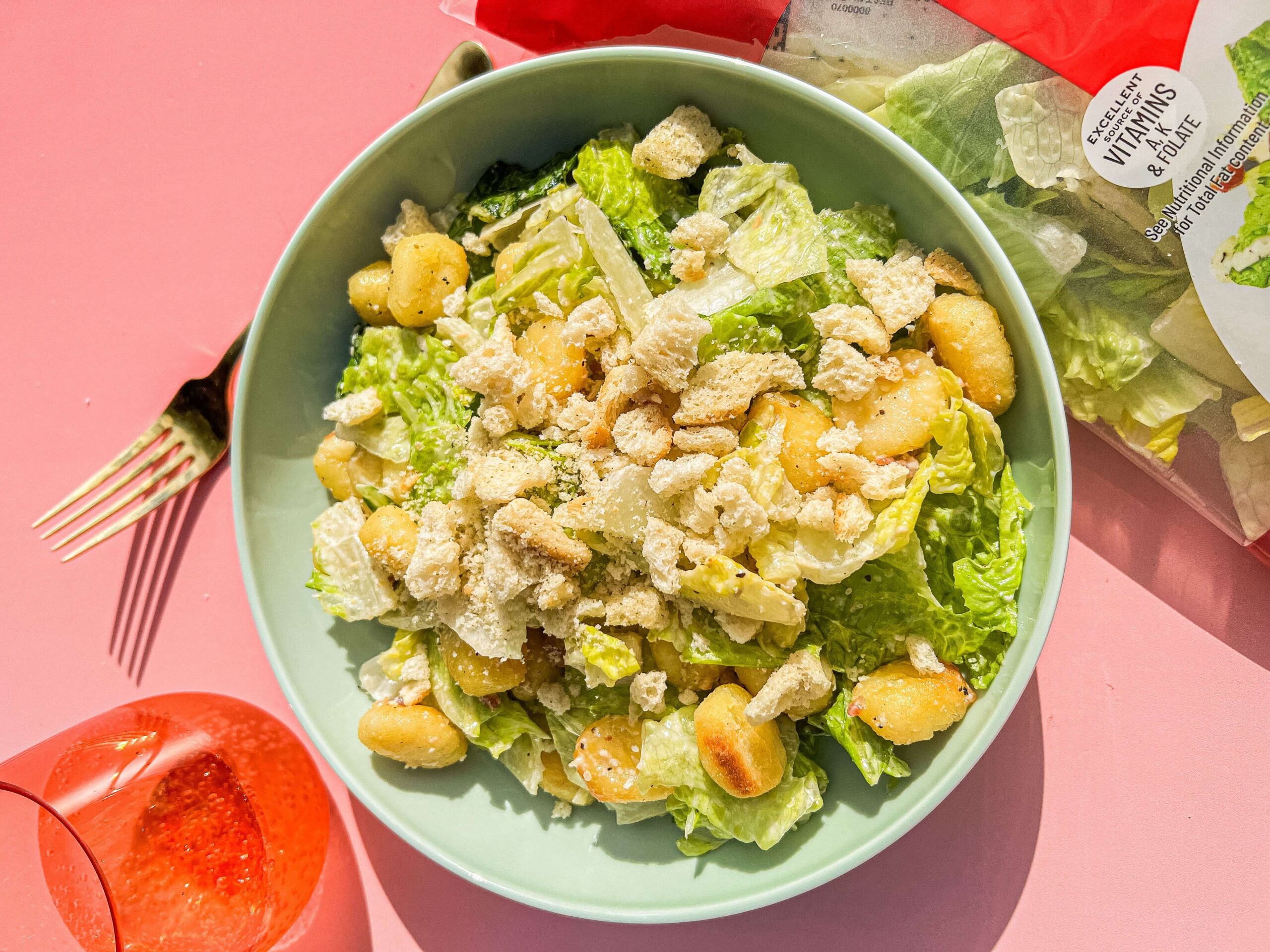
How to cook & serve romaine
Romaine lettuce is more talented than you think. This adaptable leafy green can be enjoyed in several ways. Here are some popular ways to cook romaine and a few handy serving suggestions:
Grilled Romaine: Yep, you can grill romaine! Halve the romaine heads lengthwise, brush them with olive oil, and grill them cut side down until slightly charred. This method awakens the lettuce’s natural flavors and adds a smoky element. Serve grilled romaine with toppings like crumbled cheese, crispy bacon, cherry tomatoes, and a drizzle of balsamic glaze or Caesar dressing.
Sautéed Romaine: Heat a bit of olive oil or butter in a skillet and add chopped romaine leaves, cooking them until they wilt slightly. Sautéed romaine can be served as a side dish, seasoned with garlic, salt, and pepper. It also pairs well with grilled chicken or fish.
Stir-Fried Romaine: Cut romaine leaves into bite-sized pieces and stir-fry them with other vegetables like bell peppers, onions, and mushrooms. Toss in some soy sauce, ginger, and garlic, then serve the stir-fried romaine over steamed rice or alongside noodles.
Romaine Wraps: Use whole romaine leaves as a healthy, virtually no-carb alternative to tortillas or bread. Fill the leaves with ingredients like grilled chicken, shrimp, or tofu, along with your favorite vegetables and condiments.
Roasted Romaine: Place halved romaine heads on a baking sheet, drizzle with olive oil, and season with salt and pepper. Roast in the oven until the leaves are slightly wilted and have a caramelized flavor. Top with shaved Parmesan cheese, toasted nuts, and a squeeze of lemon juice for a simple yet satisfying dish.

